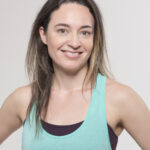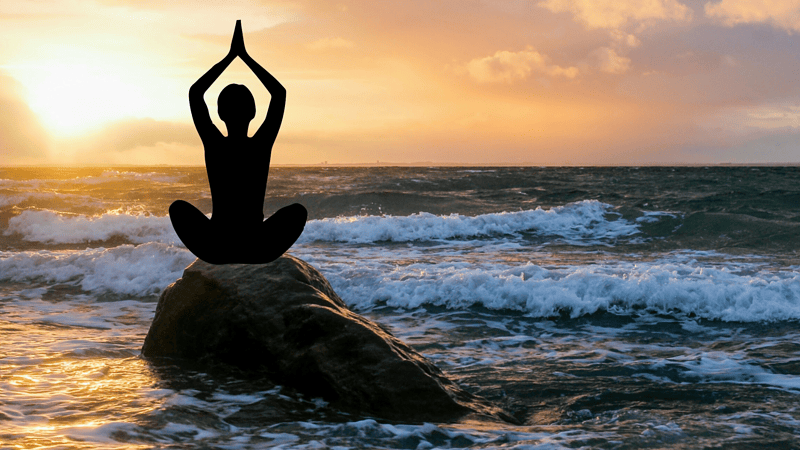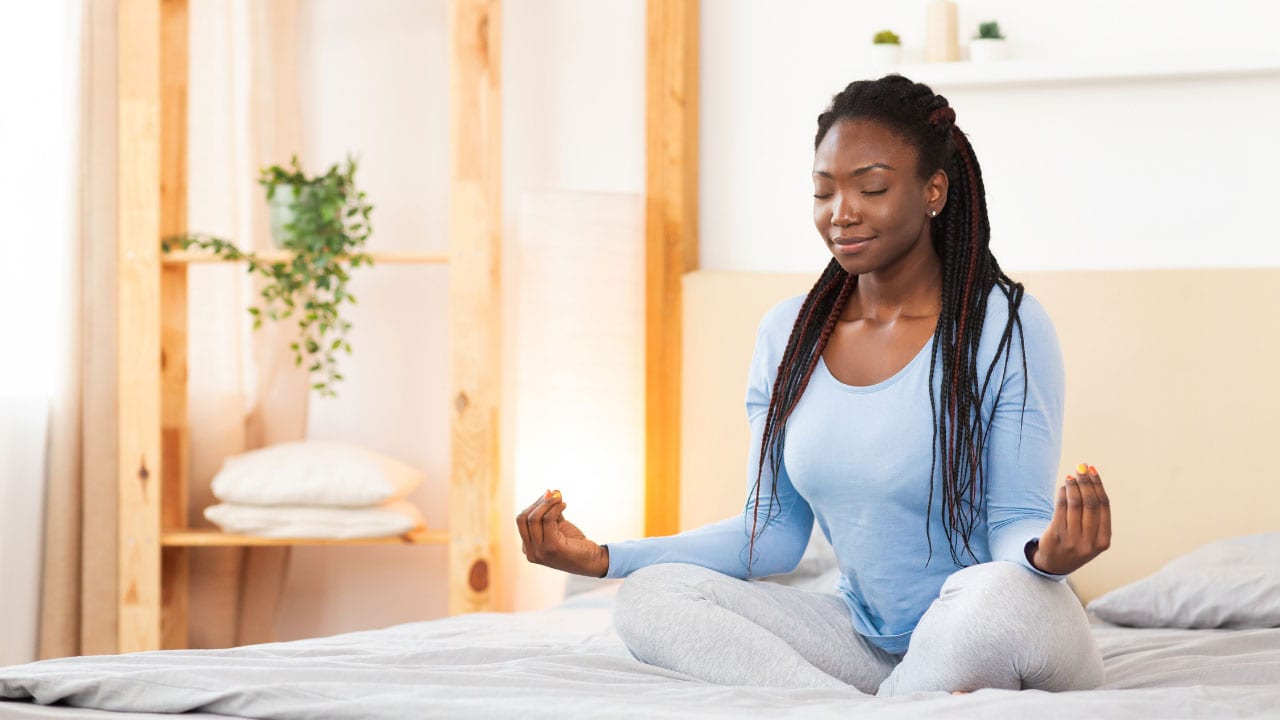
Yin Yoga for sleep
A grounding Yin Yoga sequence to aid sleep. By Julia Clarke
Experts agree that getting enough sleep is the foundation of good health, but it’s easier said than done. This yin yoga sequence is designed with relaxation in mind to help you achieve deep, restorative sleep.
There are few things better than waking up after a good night’s sleep. Everything tends to look, sound and feel brighter, fresher and better. And it’s not just an illusion. Experts agree that getting enough sleep is the foundation of health – it helps you to focus and retain information, improves your mood and also has important physical benefits such as helping you maintain a healthy weight and promoting heart health.
On the other hand, waking up feeling groggy after a night of tossing and turning tends to sour your mood and makes it difficult to accomplish even the simplest of tasks. A new study published in the Annals of Behavioral Medicine has found that just one night of sleep loss results in impairment of mood, energy and performance the following day, while getting less than six hours of sleep a night results in significant deterioration of physical and mental wellbeing after only three nights.
The answer, clearly, lies in getting enough sleep – a minimum of seven hours a night according to the National Sleep Foundation. But this is easier said than done; there are lots of factors that contribute to disrupted sleep such as age, certain behaviours like too much alcohol and caffeine, as well stress and anxiety. When it comes to the latter, training your nervous system how to relax with practices like yin yoga and meditation can prove to be a great resource when it’s time to lie down for sleep. Many people who struggle with sleep are apprehensive about relaxing during the day in case it makes it harder to fall asleep at night, but experts agree that relaxing before bed actually helps you sleep better.
Yin yoga can be an effective practice for relaxing your body and mind before bed. Yin yoga uses long holds in passive stretches to encourage you to release tension in your soft tissues that may be lingering there as a result of everyday stress. The resulting relaxation activates your Parasympathetic Nervous System, which is essential for sleep.
This yin yoga sequence is designed with relaxation in mind, focusing on forward bends and hip openers which many of us find to be grounding. Of course, you can practice it any time your hips are feeling stiff, but we recommend turning off your electronic devices an hour before bed, trading the glare of overhead lights for soft lamps and enjoying this practice in the evening to promote a good night of deep, restorative sleep.
Have a couple of yoga blocks or large books for this practice, and keep a couple of pillows and a blanket close by for comfort.
Reclining Butterfly with Incremental Breath
3 - 5 minutes
Lie down on your back and bend your knees. Place the soles of your feet together and open your knees wide so your legs make a diamond shape. If this causes any pain or discomfort in your hips or knees, place blocks or pillows under your outer thighs for support. It’s up to you how close or far your heels are from your pelvis, and moving your feet will change the sensation so take a few moments to explore. Place your left palm on your heart and your right palm on your belly. Relax your body here and let your breath become natural and easy.
To begin Incremental Breath, take a complete exhale then take about one third of a breath in and briefly pause for 1 to 2 seconds. Inhale another third and pause. Finally inhale to the top of your breath and pause. Exhale all the way out, without pausing, then begin again. It is helpful to visualize a well, slowly filling with water, then emptying.
Take 6 to 8 rounds of Incremental Breath. Ensure that at no point are you holding your breath to the point of strain or discomfort; rather, this should feel as though you are gently sipping your breath.
When you are finished, return your breathing to normal and rest.
When you’re ready to come out of the pose, use your hands to draw your knees together and hug them into your chest.
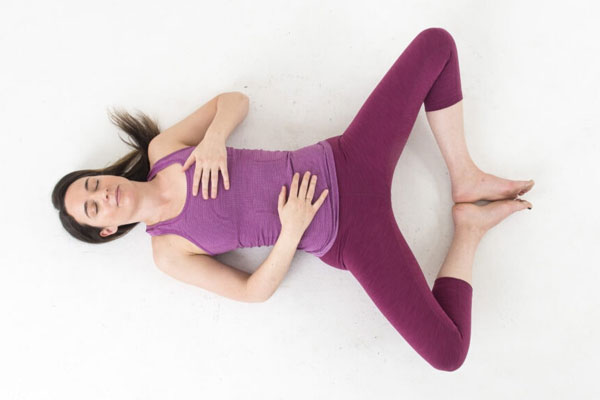
Half Dragonfly
2 - 5 minutes per side
Gently come up to sitting and take both legs out straight and as wide as they will comfortably go. Keep your right leg where it is and bend your left knee, bringing your heel in toward your pelvis. If your left knee or hip need a little support, slide a pillow or blanket underneath your leg. Place two blocks in front of you on any height, and place your elbows on the blocks. If you can, criss cross your forearms and rest your head on your arms so you can relax your neck and jaw, which is a great way to signal to your nervous system that you are safe, and it is okay to relax.
Alternatively, you can cup your chin in your hands.
Try to relax your abdominal muscles and hips here as much as possible, and breathe easily.
When you feel ready, press yourself up to sitting and stretch your left leg out long again, then change sides.
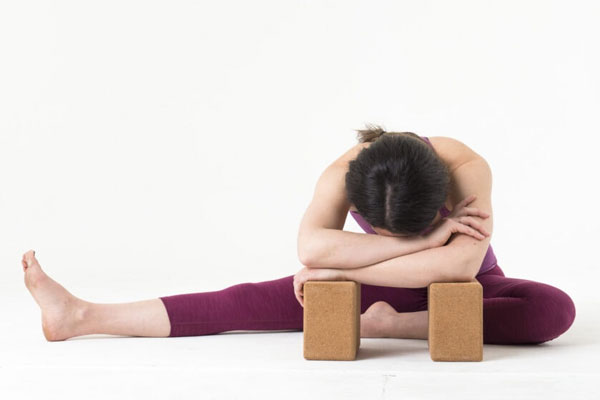
Dragonfly
3 - 5 minutes
From sitting, stretch both legs out long and as wide as they will comfortably go again. Place your elbows on your blocks again and bow forward, resting your chin in your hands so you can relax your neck and jaw. Focus on relaxing the muscles on your abdomen and hips, where you might carry a lot of tension. After a minute or two, you may feel relaxed enough that you can turn the blocks down to a lower height, but don’t force this. Most important is to find a nice edge of manageable sensation and try to relax into it. Then when you get into bed at night, even if you are carrying a little residual tension from the day, your nervous system will remember how to relax.
When you feel complete here, press yourself up to sitting and use your hands to bend your knees, then hug them into your chest.
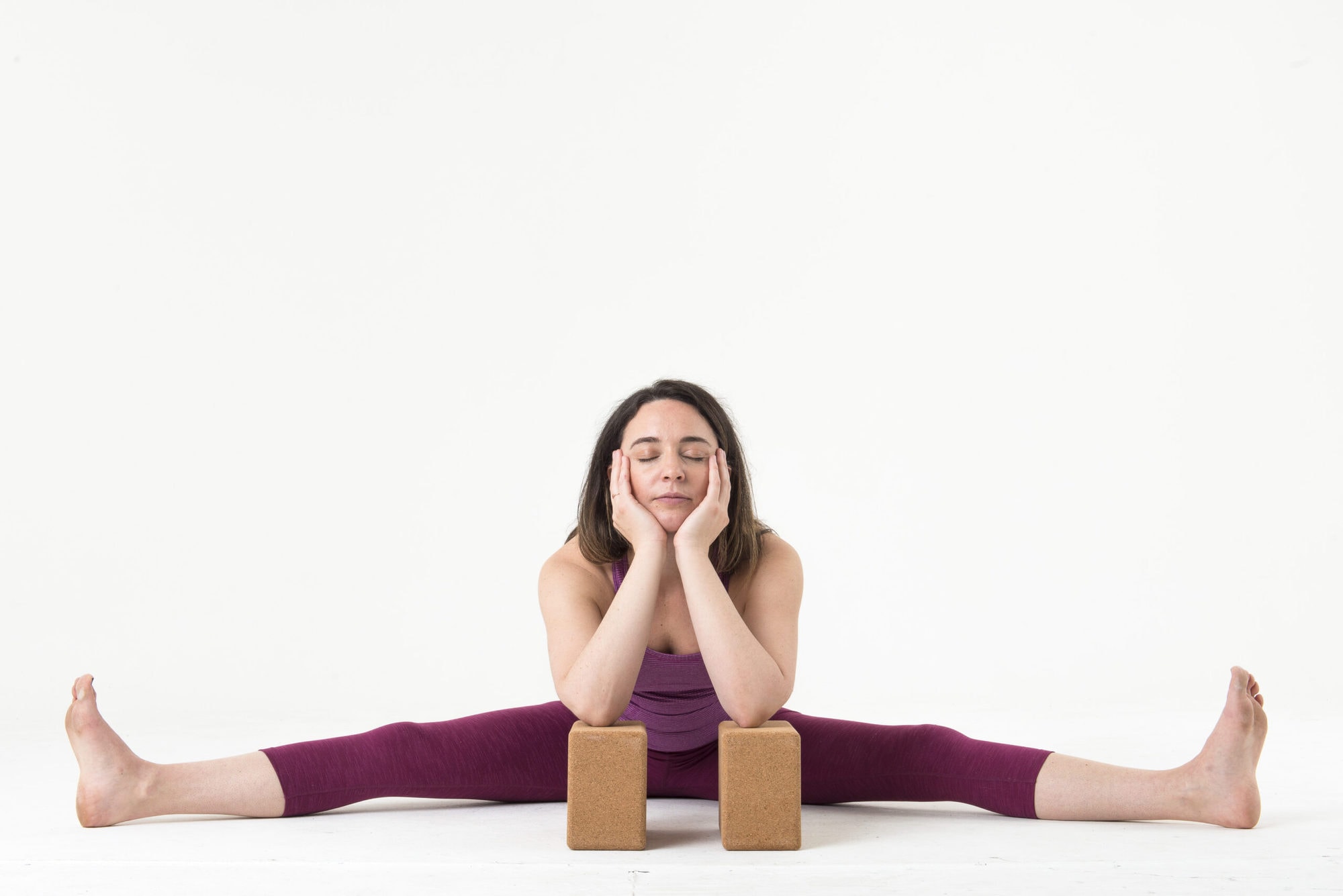
Frog
2 - 5 minutes
Come onto your hands and knees. For this pose, you may want to turn sideways on your mat, then bring your knees as wide as they will comfortably go so that they are still cushioned by your yoga mat. If you need a bit more cushioning, you can place a blanket on top of your mat here.
Now, keeping your hips more or less in line with your knees, come down onto your elbows and rest your forehead on your forearms, a block or a pillow. It’s common to feel quite a big sensation in your inner thigh muscles here, but instead of bracing against it and activating the stress response, breathe gently and relax into it. After a minute or two, you might feel the stretch sensation begin to diminish and you can press your hips back an inch or two and begin the process of relaxing into deep sensation all over again.
This challenging pose can provide a nice training exercise for relaxing under stressful conditions.
To come out of Frog, slide forward onto your belly and rest here for a few moments before pressing back up to hands and knees.
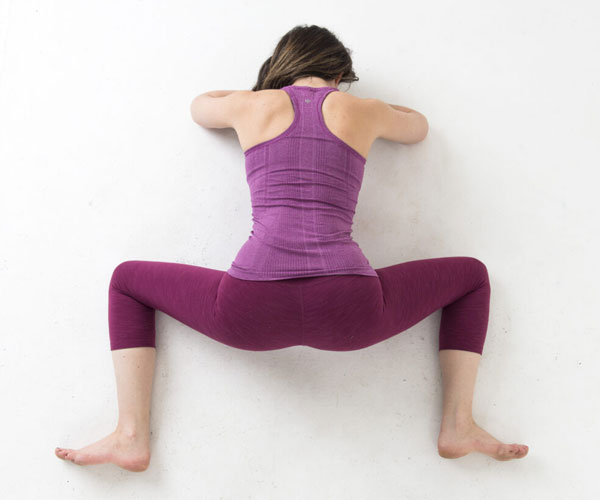
2 - 5 minutes
After Frog, there’s nothing left to do but unwind and relax. Come down onto your back again and bend your knees. Place your feet on the ground roughly as wide as your yoga mat and rest your arms up overhead. Keeping your feet wide, let both knees drift over to the right side for a few breaths – this should feel like more of a stretch to your outer left hip then a spinal twist – then change sides. Keep this slow pace up, bringing your knees from side to side and letting your hips unwind.
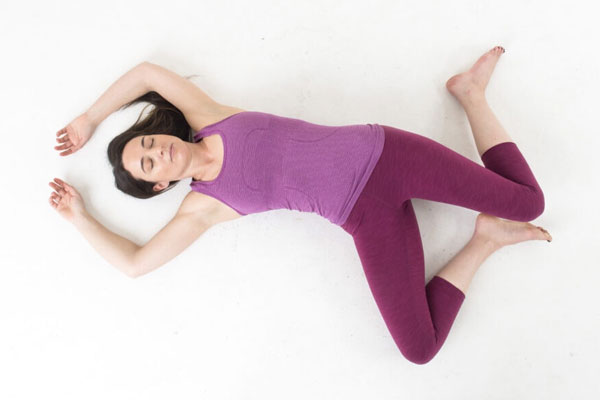
When you feel even side to side, give your knees a hug into your chest then stretch your legs out long and release your arms by your sides for a few minutes in Savasana (Corpse Pose) or get right into bed and finish your yoga practice with a good night’s sleep.
Photos: Rick Cummings

